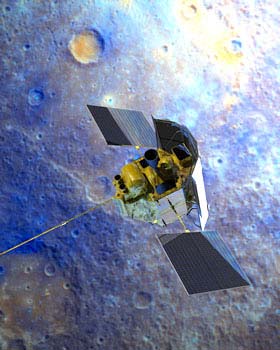When a NASA spacecraft goes into orbit around Mercury on March 31, 2011, a team of Lawrence Livermore National Laboratory (LLNL) researchers will be paying close attention.
|
ADVERTISEMENT |
During 2002 and 2003, LLNL scientists developed a germanium-based gamma-ray spectrometer that has been winging its way aboard the Mercury MESSENGER (short for MErcury Surface, Space Environment, GEochemistry and Ranging) for the past six and a half years.
If everything goes as planned, MESSENGER will begin a highly elliptical orbit of Mercury at 6 p.m. (PDT), coming as close as 200 km (120 miles) to the planet and as far as 15,000 km (9,000 miles) away. It will be the first spacecraft to ever orbit Mercury, circling the planet every 12 hours for one year.

MESSENGER readies for Mercury orbit insertion.
Credit: Johns Hopkins University
The MESSENGER mission is part of NASA’s Discovery Program and is led by the Johns Hopkins University Applied Physics Laboratory.
Livermore’s gamma-ray spectrometer will help determine the elemental and mineral composition of Mercury’s surface.
…
Add new comment